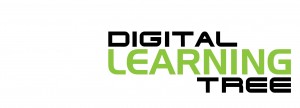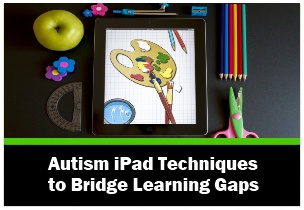Description
Take a look inside lesson one of our Flip Teaching Essentials online course.
Instructors: Shannon Holden and James Knight
Introduction
One of the most exciting developments in education in recent years is the growth in popularity of “Flipped” teaching techniques. Teachers are using technology to deliver lessons in a whole new way — and a whole new location! A large portion of the teacher’s “traditional” lecture-style lesson is being recorded, and students are viewing these recorded lessons at home. This has made more class time available for teachers to engage students in class discussions, cooperative learning activities, and project-based learning.
Flip Teaching Essentials introduces educators of all technical backgrounds to free and inexpensive “techtools” that increase student engagement and achievement. This course gives teachers practical strategies to produce screencasts, podcasts, websites, blogs, and use cloud-based storage systems in the process of integrating technology in the classroom.
This online course is not text-book driven but interactive and project-based. Not only will educators learn how to effectively integrate 21st Century teaching strategies in a variety of contexts, they will be able to build rubrics that objectively assess student projects made with technology. Teachers will finish this course by knowing every method they will need to implement the Flipped Teaching Model in their classroom.
This course is taught by Shannon Holden, founder of NewTeacherHelp.com and host of two webinar series on edWeb.net. Shannon also teaches pre-service teachers at Missouri State University how to implement technology in their classrooms.
You can take this Flip Teaching online course through the University of North Dakota and receive CEU university credits upon successful completion.
Course Objectives
You will learn:
What Flip Teaching is, and who were prominent early-adopters of this method.
Answers to Frequently Asked Questions about Flip Teaching.
How to make videos and screencasts and post them to video-sharing websites.
How to embed videos in blogs and teacher websites.
How to make podcasts and post them to podcast-sharing websites.
How to embed podcasts in blogs and teacher websites.
How to use free Internet resources to help you flip your classroom.
A “Flipped Teaching Matrix” walks you through the process step-by-step!
Session Topics
1. What is Flip Teaching?
2. Examples of Flip Teaching.
3. Flip video from Aaron Sams.
4. To Flip or not to Flip.
5. The five best practices of Flip Teaching.
6. Why Flipped classrooms are here to stay.
7. Answers to Flip Teaching questions.
8. Flipped class manifest.
9. Making screencasts with aTube Catcher.
10. Educreations screencasting tool.
11. Making screencasts with CamStudio.
12. Flip Teaching matrix.
13. Downloading videos to your computer.
14. Uploading videos to Vimeo.
15. Embedding videos on your blog.
16. Using DropBox to Flip your class.
17. How Flipping can fail.
18. How to make a QR Code.
19. Making podcasts.
20. Building teacher websites.
21. Using the Flip Camera.
22. Setting up a blog.
23. Using aTube Catcher.
24. Assessing student projects made with technology.
25. Using free internet resources as you Flip.
26. Using online communities to Flip your classroom.Outline of Course
Lesson One – What is Flip Teaching?
Teachers will learn what the definition of “Flipping” is, and a brief history of the Flip Teaching movement.
Teachers will also learn what “Flipping” is NOT.
Reasons will be given as to why Flip Teaching works.
The secret software Sal Khan of “Khan Academy” uses to produce his videos will be revealed.
Lesson Two – Examples of Flip Teaching
Teachers will be shown examples of how teachers have Flipped their classroom to increase the amount of student engagement in their lessons.
Teachers explain how they went from a classroom where 90% of their time was spent delivering lessons and only 10% of class time was spent actually applying what was learned – to 10% delivery and 90% application.
Teachers also answer the #1 questions skeptics ask: “What happens if students don’t watch the videos?”
Lesson Three – Flip video from Aaron Sams
Teachers will view a “Greatest Hits” video of successful Chemistry lessons from two enthusiastic early adopters of Flipping, Jonathan Bergmann and Aaron Sams. While these two innovative teachers claim they did not “invent” Flipping, they are two of the most influential teachers who have adopted the method.
Lesson Four – To Flip or not to Flip
Not every teacher should try to Flip their classroom!
There is no “Silver Bullet” for education, and Flipping is not being promoted as such – it is simply ONE method teachers can use out of many!
The pros and cons of Flipping are discussed by teachers, professors, and instructional specialists.
Teachers are presented with a list of questions they should answer when trying to determine if their content is suitable for Flipping.
Lesson Five – The five best practices of Flip Teaching
Teachers will learn the best types of material to transfer to students through the Flipped Teaching Model.
Once teachers have (in the words of Sal Khan) been “liberated to communicate with their students” – What should teachers do next?
Lesson Six – Why Flipped classrooms are here to stay
Bergmann and Sams share data from their first years of Flipping that show significant gains in student performance.
Teachers will learn about the variety of techniques they can use – there is no ONE way to Flip.
Teachers will learn why teachers have embraced the technique, and why it works.
Lesson Seven – Answers to Flip Teaching questions
Teachers will hear the answers to questions that skeptics ask when trying to discount the effectiveness of Flipped classrooms.
An administrator shares his experiences with Flipping, and how it changed the culture of his school.
Lesson Eight – Flipped class manifest
Teachers explain the benefits of Flipping, and built an outline for others to follow when trying this method of lesson delivery.
Teachers will know how the Flip classroom fits into instruction.
Lesson Nine – Making screencasts with aTube Catcher
Teachers will be shown how to download a free piece of software called aTube Catcher.
Teachers will discover how to utilize the many features of the software, such as screencasting, podcasting, recording DVD’s, and downloading videos from video-sharing websites such as YouTube for classroom use.
Lesson Ten – Educreation’s screencasting tool
Teachers will learn about the many features of a lesson-creation software for iPads called Educreations.
The answers to frequently asked questions about the software will be revealed, as well as an explanation of how this technology can be best utilized in the classroom.
Lesson Eleven – Making screencasts with CamStudio
Teachers will be shown how to download a free piece of screencasting software called CamStudio.
Teachers will learn how to utilize this software to create screencasts suitable for upload to a video-sharing website.
Lesson Twelve – Flip Teaching matrix
Teachers will be shown how to implement Flip Teaching strategies, step-by-step.
Lesson Thirteen – Downloading videos to your computer
Teachers will learn how to download onto their computer the videos they have made with a video camera or smartphone.
The downloaded videos can then be edited by using video-editing software, or uploaded to a video sharing website such as YouTube or Vimeo.
Lesson Fourteen – Uploading videos to Vimeo
Teachers will learn how to upload videos from their laptop, tablet, or desktop computer video-sharing website such as YouTube or Vimeo.
Lesson Fifteen – Embedding videos on your blog
Teachers will learn how to capture the “Embed Code” from videos on video-sharing websites, and use the code to embed videos on a website or blog.
Lesson Sixteen – Using DropBox to Flip your class
Teachers will learn how to make an online DropBox account to store videos, pictures, text files, and podcasts.
Teachers will learn how to utilize their DropBox account instead of building a website or blog.
Lesson Seventeen – How Flipping can fail
There are many people in the education community who do not fully understand what Flipping is. As a result, they make uninformed judgments and statements about the practice of Flipping.
Teachers will learn how to educate their colleagues about the benefits of Flipping.
Lesson Eighteen – How to make a QR Code
Teachers will learn the history of the Quick Response (QR) code, and how the idea has been adapted to education.
Teachers will learn how to make a QR Code, and link it to important information such as videos, text documents, educational websites, and email addresses.
Lesson Nineteen – Making podcasts
Teachers will learn how to download free software to make podcasts.
Teachers will learn to upload their podcasts to free podcast-hosting websites, and direct students to the appropriate podcasts in order to enrich their lessons.
Lesson Twenty – Building teacher websites
Teachers will be shown a wide variety of free website builders.
Teachers will be able to display a large amount of information on their websites, such as a calendar, embedded videos and podcasts, text documents, links to educational websites, question/answer pages, and lecture notes.
Lesson Twenty-One – Using a Flip camera
Teachers will be shown how to obtain a Flip camera, even though the device is not being produced anymore.
Teachers will be able to make and upload Flip videos to their computer.
This knowledge can be used for the operation of other types of video cameras, including smartphones.
Lesson Twenty-Two – Setting up a blog
Teachers will be shown how to set up a free account on a blogging site such as Blogger.
Teachers will be able to write blog posts, answer questions from parents and students, and embed widgets, pictures, links, and videos on their blog.
Lesson Twenty-Three – Using aTube Catcher
There are many features included in the free screencasting program called aTube Catcher. Teachers will learn about all of them.
Teachers will learn how to use aTube Catcher to download videos from video-sharing websites, make DVD’s and CD’s, and convert video files to different formats.
Lesson Twenty-Four – Assessing student projects made with technology
Teachers will learn how to build rubrics to assess student projects made with technology.
Teachers will learn how to find rubrics online in the event that they do not want to build their own rubrics.
Lesson Twenty-Five – Using free internet resources as you Flip
Teachers will learn to find and utilize free Internet resources in their lessons.
Teachers will learn how to encourage students to find and utilize free Internet resources to help them learn.
Lesson Twenty-Six – Using online communities to Flip your classroom
Teachers will learn how to encourage student interaction and collaboration by using safe online communities.
Teachers will learn how to determine whether or not a particular online community is “safe”.







Reviews
There are no reviews yet.